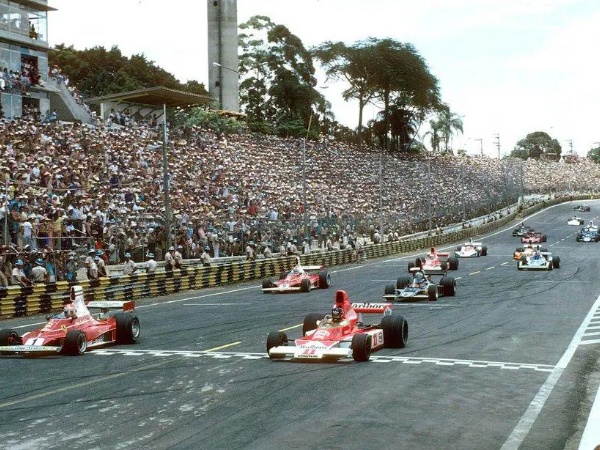views : 736
2 Min Read
Racing at Interlagos: A Brazilian F1 classic
Construction of what would become the Autodromo Jose Carlos Pace—better known as Interlagos—began in 1938. Located in Sao Paulo, the circuit was inspired by three of the most iconic tracks of the time: Brooklands in the UK, Roosevelt Raceway in the USA, and Montlhéry in France. The design incorporated high-speed sections and flowing corners, making it a unique and challenging venue for both drivers and engineers. Interlagos holds a special place in Brazilian motorsport history, and its legacy was cemented when Formula 1 arrived there for the first time in 1973. This debut came during a golden era for Brazil, thanks to the rising stardom of local hero Emerson Fittipaldi.
The timing couldn’t have been better—Fittipaldi gave fans something to cheer about by winning the first two editions of the Brazilian Grand Prix in 1973 and 1974. The following year, it was another Brazilian, Carlos Pace, who took the top step of the podium in 1975. That victory was especially meaningful, as the circuit would later be renamed in Pace’s honor following his untimely death. Interlagos has since become a beloved fixture on the F1 calendar, known for passionate fans, unpredictable races, and its rich racing heritage.
Interlagos, like many pre-World War II circuits, features dramatic elevation changes and banked corners, giving it a character unlike any other on the Formula 1 calendar. Drivers begin their lap on a semi-oval layout, a nod to the circuit's history—between 1957 and 1990, the track could actually be run as a full oval. From the start-finish straight, they dive into the famous Senna S, a technical sequence of corners that leads down to Turn 4. From there, the lap continues through a flowing infield section, filled with tricky camber changes and elevation shifts, before the cars sling back uphill and sweep through the fast, banked final turn that slingshots them onto the main straight.
The atmosphere at Interlagos is nothing short of electric. Brazil brings a carnival spirit to Formula 1, with fans known for their passion, music, and unwavering energy. Even without a current Brazilian driver on the grid, the enthusiasm never fades—every race here feels like a festival. Spectators are spoiled for choice when it comes to views. Grandstand A, perched on the banked section leading into the start-finish straight, offers a panoramic view of both the infield section and the main straight as cars thunder past. On the opposite end, Grandstand M sits above the Senna S, giving fans a prime position to witness overtakes and first-lap chaos unfold. Whether you're there for the action, the atmosphere, or the history, Interlagos delivers one of the most unforgettable experiences in all of motorsport.
